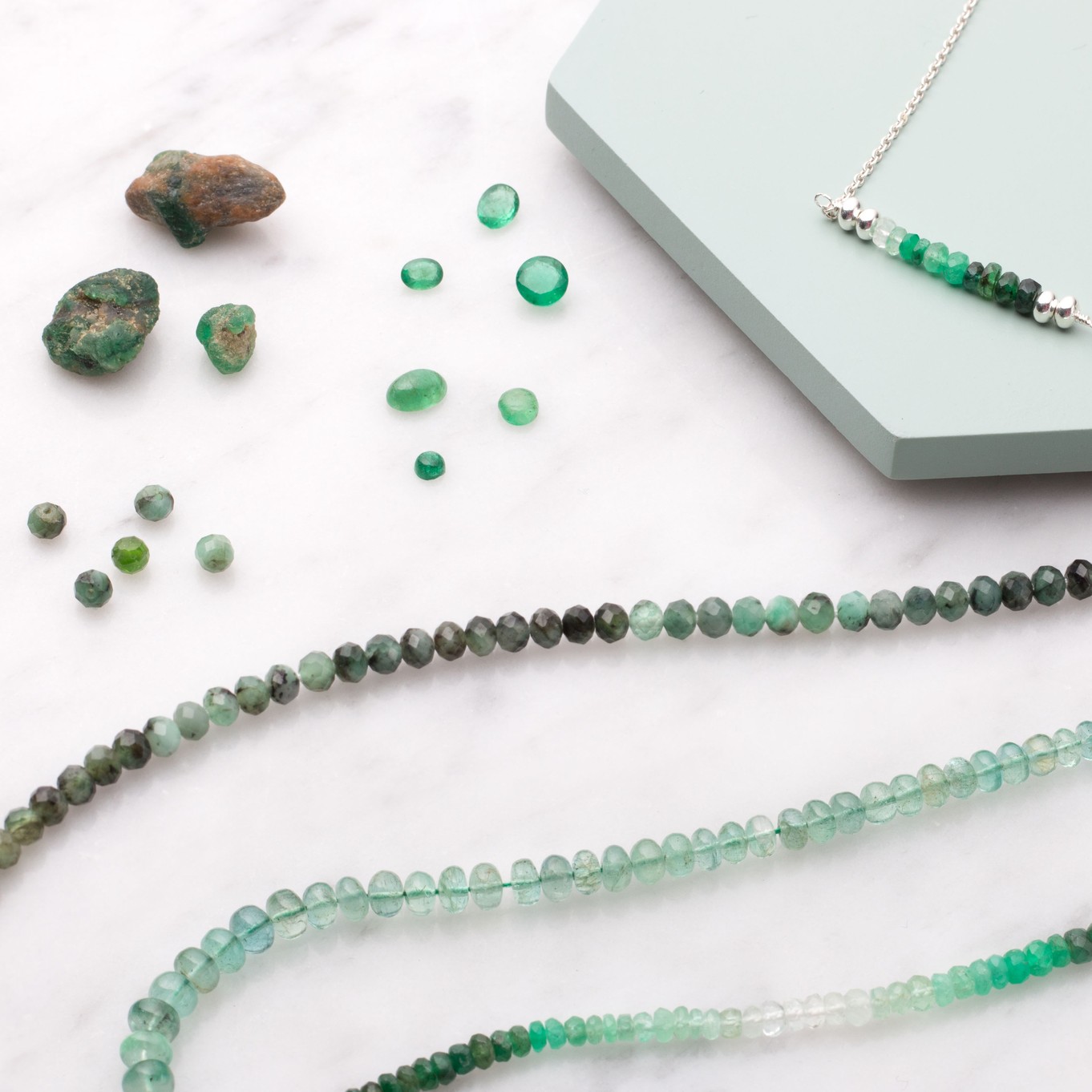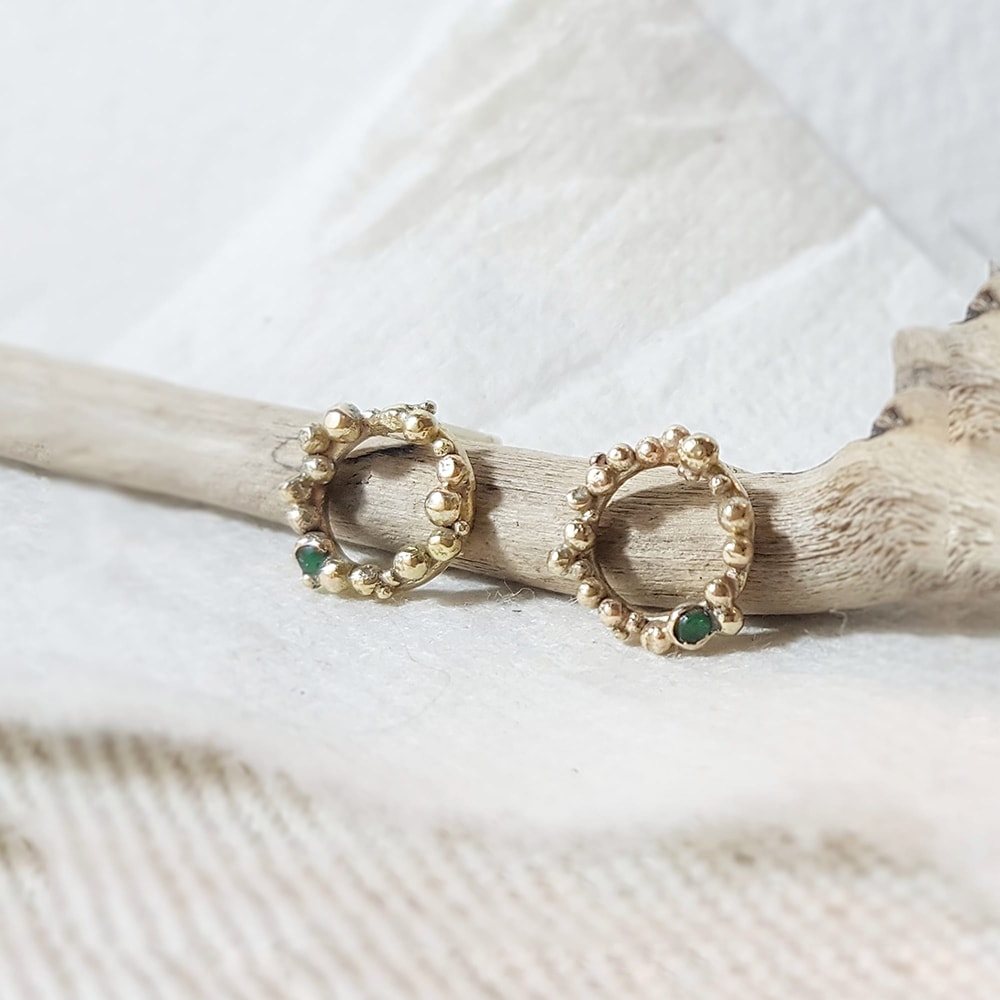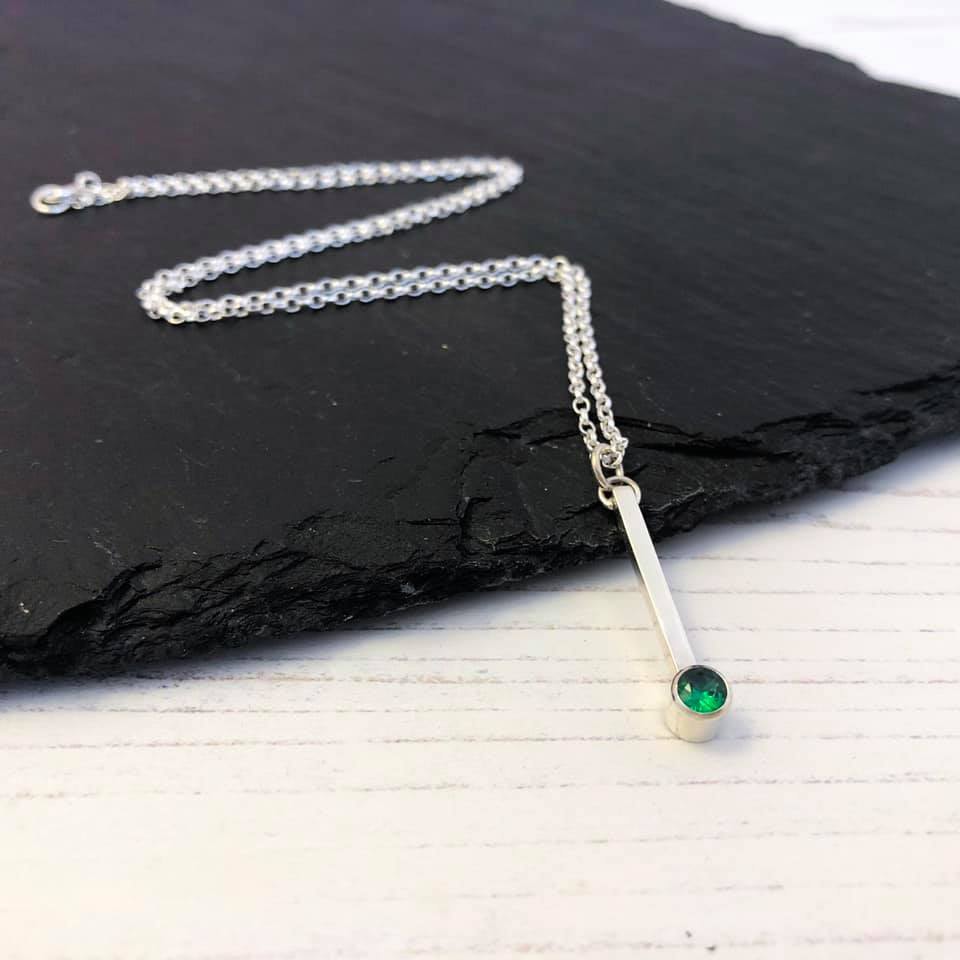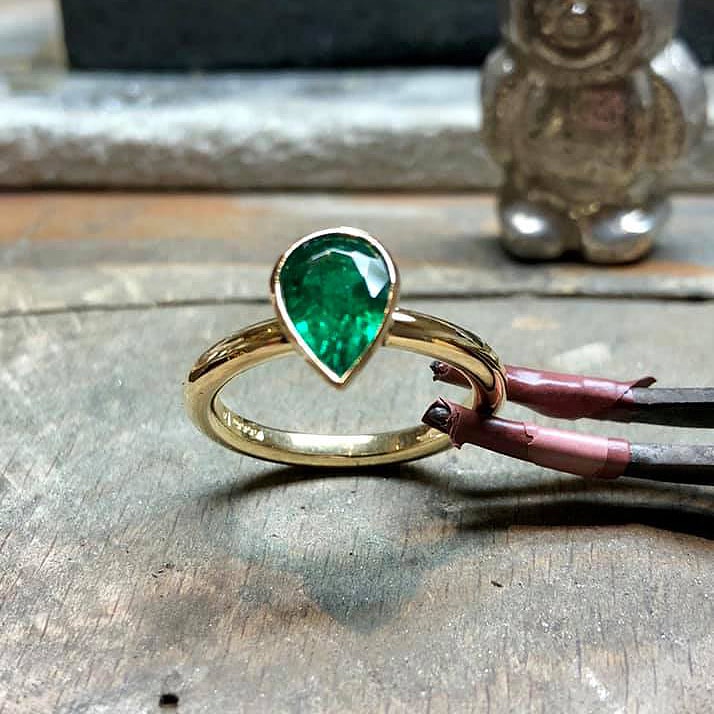Emerald: The May Birthstone
Emerald is the beautiful birthstone of May. It is a well known, popular and classic gemstone that has been used in jewellery making for centuries. Emerald is said to be the stone of infinite patience as well as the "stone of successful love".
We stock a variety of emerald stones at Kernowcraft including faceted stones, cabochons and beautiful beads. We're celebrating this precious stone in this post all about emerald's history and spiritual properties as well as some emerald jewellery making inspiration.
Emerald Facts
Colour: Emerald is found in a small variety of deep velvety shades of green - the colour "emerald green" being named after the gemstone. The most valuable colour of emerald is the deeper shade of green which can be hard to come across in a size worth cutting. The colour of emeralds is not normally affected by light and does not alter over time as some other gemstones can.
Appearance: Emerald is often found with inclusions caused by gas bubbles, liquid, healing cracks and foreign crystals. It is rare to find flawless emeralds however its flaws can be invaluable in distinguishing the real stone from synthetic imitations.
Rarity: Emeralds are not considered a rare stone however finding the clearest stones can be a challenge.
Moh's Scale Hardness: Emerald is part of the beryl family, it measures 7.5 - 8 on the Moh's hardness scale, making it one of the tougher gemstones.
Sourced: Emeralds are sourced in Columbia, Austria, India, Australia, Brazil, South Africa, Egypt, USA, Norway, Pakistan and Zimbabwe. The finest Emeralds are currently found in Columbia where they occur in veins within dark shales and limestones.
Formation & History Of Emeralds
Emerald is formed by rising magma and metamorphism. Mining is nearly exclusively from host rock where the emerald has grown into small veins or on walls of cavities.
The oldest known emeralds were found near the red sea in Egypt. However, gemstone mines that had already been exploited by Egyptian pharaohs between 3000 and 1500 BC - known as 'Cleopatra's Mines', had already been exhausted by the time they were rediscovered in the early 19th century.
The Vedas which are the holy scriptures of the Indians, talk of a precious green gem and its healing properties. They believed emeralds promised good luck and enhanced well-being. The treasure chests of Indian maharajas and maharanis have been found containing wonderful emeralds.
The name emerald comes from the Greek 'smaragdos' via the Old French 'esmeralde' which means 'green gemstone'.
There are many well-known large emeralds as famous as diamonds and rubies. Many beautiful pieces of serval carats are kept by the British Museum of Natural History in London and the American Museum of Natural History in New York.
Emeralds have been a spiritual stone throughout history. Semi-Divine Egyptian magician Hermes Trismegistos created the legendary Emerald Tablet in which he engraved all of the secrets of magic and alchemy!
Learn more about Emeralds
Emerald's Mythology, Healing & Spiritual Qualities
Emerald is said to be the stone of infinite patience. It is thought to be a 'life-affirming' stone with great integrity. Known as the "stone of successful love", it brings domestic bliss and loyalty as well as unconditional love and partnership.
Emerald is also said to have the ability to sharpen the wits, confer riches and power as well as predict future events.
Wear an emerald out of sight and near the heart to attract love (especially in older women) or wear an emerald openly for healing a relationship.
Wipe emeralds with a soft cloth and recharge the powers within this stone by the waxing moon.
Emeralds are regularly used in crystal healing. They were said to assist with eye infections as the soothing green colour of the emerald was thought to be restful to the eyes when they had been under much strain. Conditions linked to the heart, lungs, pancreas and lymph nodes are also said to be helped by emerald.
The emerald was also used as an antidote for poisons and infected wounds, as well as against possession by demons. It is said to increase inner radiance and preserve youthfulness, helping older women through menopause.
JEWELLERY DESIGN WITH EMERALD
Emeralds have been used in jewellery making for centuries. It is a strong stone with a beautiful vivid and natural colour which makes it very popular. Below is a selection of our emerald products and some design ideas for incorporating them.
Resources:
Websites:
Books:
- Gemstones, Second Editon - Cally Oldershaw, Cristine Woodward and Roger Harding
- Gemstones Of The World - Walter Schumann
- Dorking Kindersley Handbooks - Gemstones - Cally Hall
- The Crystal Bible - Judy Hall
Also in this section:
- The Chakras & Stones For Beginners
- Top Gemstones For Love & Valentine's Day
- Rare Ammolite For Jewellery Making
- 5 Gemstones To Honour Your Mum
- 5 Gemstones To Wear On Your Travels
- Mohs Hardness Scale, Gemstone Durability & Jewellery Making
- Top 10 Affordable Gemstones For Jewellery Making
- Your Guide To Anniversary Gemstones & Jewellery Making
- Your Guide To Birthstones & Birthstone Jewellery
- Discover Rare Cornish Turquoise
- Garnet: The January Birthstone
- Amethyst: The February Birthstone
- Aquamarine: The March Birthstone
- Diamond: The April Birthstone
- Emerald: The May Birthstone
- Pearl: The June Birthstone
- Ruby: The July Birthstone
- Peridot: The August Birthstone
- Sapphire: The September Birthstone
- Opal: The October Birthstone
- Topaz: The November Birthstone
- Turquoise: The December Birthstone
- Types Of Diamonds For Jewellery Making
- Lapis Lazuli, The Stone For Truth & Communication
- Types Of Agate Stones For Jewellery Making
- What Are Precious & Semi-Precious Stones?
- Watermelon Tourmaline For Jewellery Making
- 6 Stones For Alternative Engagement Rings
- Rare Tanzanite For Jewellery Making
- Gemstones For Your Inner Mermaid
- 5 Spiritual Gemstones To Help Your Mind & Body
- Rose Quartz, The Love Stone
- What Are Drusy Gemstones?
- What Is A Boulder Opal & How Do We Source Them
- All About Our Natural Untreated Turquoise






